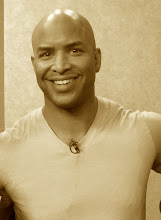This is from a good friend and mine and thought I
would share b/c it's so on point when it comes to people
not recognizing the difference between pain and soreness
during working out. Without further ado..
I get asked rehab questions all the time.
I have rehabilitated athletes in almost every major
sport who were told they were “all done” by a
doctor or a team trainer. Because people know
my background, they often ask for advice.
Most of the time they ignore the advice because
the advice does not contain the answer they
want. They say “it only hurts when I run”,
I say things like “don’t run”.
A famous coach I know once told me “people
don’t call for advice, they call for agreement or
consensus. If you don’t tell them what they want to
hear, they simply call someone else”. His advice to
me, don’t bother wasting your time with advice.
Here I go again wasting time.
If you have an injury and are wondering whether
or not a certain exercise is appropriate, ask yourself
a simple question. “Does it hurt”? The key here is
that the question ‘does it hurt?” can only be
answered yes or no. If you answer yes, then you are
not ready for that exercise, no matter how much
you like it.
Simple, right?
Not really. I tell everyone I speak with about rehab
that any equivocation is a yes. Things like “after
I warm-up it goes away” etc. are all yes answers.
It is amazing to me how many times I have asked
people this simple question only to have them
dance around it.
The reason they dance around the question is
that they don’t like my answer. They want to
know things like “what about the magic cure
that no one has told me about?”
What about a secret exercise? I have another
saying I like, “the secret is there is no secret”.
Another wise man, Ben Franklin I think, said
“Common sense is not so common”.
If you are injured and want to get better, use
your common sense. Exercise should not
cause pain. This seems simple but exercisers
ignore pain all the time and rationalize it.
Discomfort is common at the end of a set in
a strength exercise or at the end of an intense
cardiovascular workout. Additional discomfort,
delayed onset muscle soreness, often occurs the
two days following an intense session. This is
normal. This discomfort should only last two
days and should be limited to the muscles not
the joints or tendons. Pain at the onset of an
exercise is neither normal nor healthy and is
indicative of a problem. Progression in any
strength exercise should be based on a full,
pain-free range of motion that produces muscle
soreness without joint soreness.
If you need to change or reduce range of motion,
this is a problem. Progression in cardiovascular
exercise should also be pain free and should follow
the ten percent rule. Do not increase time or distance
more than ten percent from one session to the next.
I have used these simple rules in all of my strength
and conditioning programs and, have been able to
keep literally thousands of athletes healthy.
I’m sure the same concepts will help you.
-Mike Boyle
To Your Health!
John Hall NSCA-CPT
Enter Your Name and Email Address below for Instant Access!












No comments:
Post a Comment